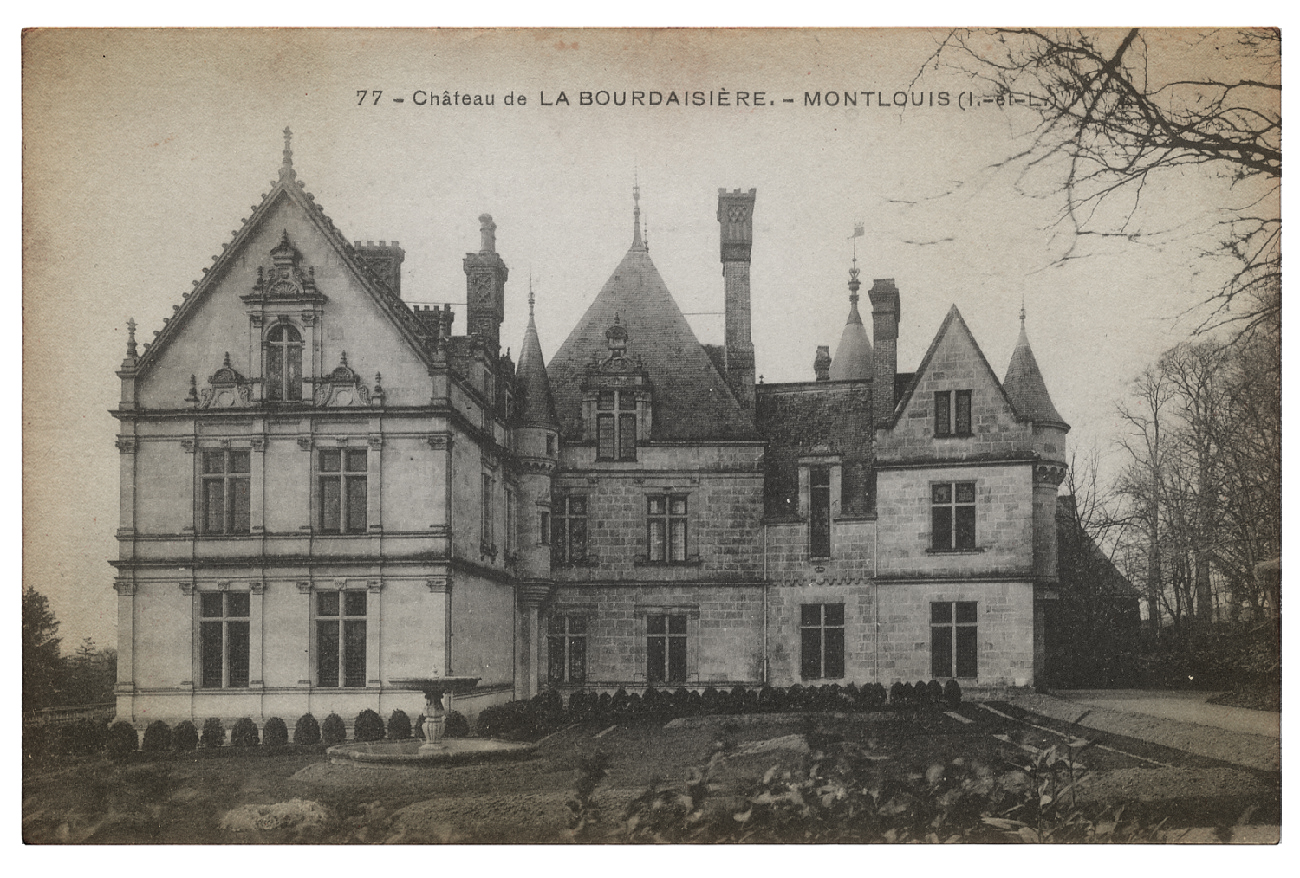Although the silhouette of the Château de La Bourdaisière is mainly reminiscent of the Renaissance, we mustn’t forget that the birth of La Bourdaisière predates the 16th century.
As early as the mid-14th century, the deputy governor of Touraine, Marshal Jean I le Meingre, known as Boucicault, had a fortress built on the site of today’s château to defend the outskirts of Tours against English attacks.
Of this medieval fortress remain the moats, the dry moats to the north and east of the château, a corner tower and a spiral staircase leading down into the moat to the south-east of the terrace.
The fortress was passed down through several generations until its first sale on May 4, 1482, a deed of which is preserved in the departmental archives. La Bourdaisière was then purchased by the then Mayor of Tours, Louis de La Mézière. From this point onwards, La Bourdaisière was to have multiple owners through sales, exchanges and inheritances.
The marriage at the Château of Marie Gaudin, heiress of La Bourdaisière, and Philibert Babou, descendant of a long line of Bourges notaries, marked the beginning of an initial period of prosperity.
Marie Gaudin was reputed to be “the most beautiful woman of her time”. In fact, she was King François I’s first mistress, which certainly helped her husband’s career. In fact, Philibert Babou received numerous offices and honors from the King, enabling him to consolidate his fortune and, around 1518-1522, to rebuild the old medieval fortress into a country residence, comprising a high-roofed entrance châtelet opening onto a drawbridge spanning the moat, extended to the north by a wing linking it to the medieval keep. It was in this new château that King François I and his successors were welcomed on several occasions during their visits to Touraine. On the death of Marie Gaudin, widow of Philibert Babou for fourteen years, La Bourdaisière passed to their eldest son Jean II, who was, among other things, Grand Master of the Kingdom’s Artillery (Minister of Defense). In 1567-1568, he decided to fortify the château by adding the south-east tower to the ramparts.
In the first half of the 17th century, the new owner of La Bourdaisière, Marquis Nicolas Gouffier de Crèvecœur, built two imposing angled buildings on the site of the medieval bailey, to form the stables. Around 1650, he added a sumptuous wing bordering the moat, of which unfortunately nothing remains, but which is depicted on an engraving as a very large dwelling flanked by two square pavilions. This magnificent construction brought its owner to ruin and led him to sell the estate in 1674. From then on, La Bourdaisière had several owners and, during the visit of the Princesse de La Tour d’Auvergne, was the meeting place for all of Touraine’s socialites. In November 1768, the Duc de Luynes, who had inherited the Château, exchanged it with the Duc de Choiseul, who brought him the barony of Cinq Mars la Pile.
The estate was then living out its final hours: when the Duc de Choiseul was exiled to his Château de Chanteloup, he ordered the destruction of the Château that the Marquis de Crèvecœur had built one hundred and twenty years earlier, leaving only the medieval keep and the Babou manor house.
La Bourdaisière, owned by the Duchesse d’Orléans, Adélaïde de Bourbon Penthièvre, wife of “Philippe-Egalité”, was sequestered in the name of the Republic and sold as “national property” in November 1794. It was bought by Armand Dubernad, a Breton wine merchant, who immediately set about building a new château to the south of the Babou manor in a massive, cubic style, decorated only by a central “antique-style” portico.
In 1802, Dubernad’s heirs sold the Château to Joseph Angelier, who was to carry out a vast restoration campaign at La Bourdaisière. He had the Directoire château “refurbished” with a neo-Renaissance façade.
Baron Angelier filled in the moat and demolished the three drawbridges and keep that remained from the medieval period. He transformed what was then a gardener’s cottage into a neo-Gothic Tudor-style chapel and designed the current kitchen garden.
His son Gustave Angelier redecorated the interior of the château, including the library. He reinforced the terrace with a brick wall in the Henri IV style. The third Baron Angelier, heir to his father’s estate in 1890, completed the ensemble by adding a tower to the château’s north-west corner and fitting out the stables with sumptuous stalls.
The château was then sold in 1923 to a wealthy American, Mme de Mérinville, who embellished the interior and exterior, and was visited by the Duke of Windsor in 1937. Purchased by an Englishman in 1938, it was occupied by the Germans, then after the liberation by a military school. Returned to its owners but left abandoned, the stables and park were listed as Historic Monuments in March 1947.
In 1959, following an auction of all the furnishings, the château was sold to the commune of Montlouis, which set up a retirement home. The château no longer met safety and comfort standards, and was sold in 1988 to Maître François Michaud. On September 2, 1991, it was finally acquired by the Princes de Broglie.




The hotel is open from March 13 to November 10 and from December 28 to January 2, and all year round on request for weddings, groups and seminars.
Rooms from €124 to €353 per night, apartments from €211 per night.
The hotel has a room for disabled guests.
No picnics allowed.
The gardens are open to the public from April 1 to April 30 and from October 1 to October 31, from 11am to 6pm; from May 1 to September 30, from 10am to 7pm.
Boutique Prince Jardinier, tearoom or Bar à Tomates®, weather permitting.
Dogs welcome, on leash.
25, rue de La Bourdaisière
37270 Montlouis sur Loire , France
Tel: +33(0)2 47 45 16 31
Email : contact@labourdaisiere.com
GPS coordinates :
Latitude 47.368621 – Longitude 0.836061
Château Hôtel de La Bourdaisière © 2024